The Iraq war has overthrown the European-inspired secular nationalism that since 1918 was the driving ideological force of the Middle East. The "new" Middle East certainly isn't the democratic, pro-Western stuff of American neo-conservatives' dreams, but it may present an opportunity to create a regional order that reflects the legitimate interests of all the actors involved.
President George W. Bush’s Middle East policy undeniably managed to achieve one thing: it has thoroughly destabilized the region. Otherwise, the results are not at all what the United States had hoped to accomplish. A democratic, pro-Western Middle East is not in the cards.
But, while things are not developing as American neo-conservatives had intended, they are nevertheless developing. The historical failure named Iraq war, the demise of secular Arab nationalism and the soaring oil and gas prices have wrought profound changes in the region. From Damascus to Dubai, from Tel Aviv to Teheran, a new Middle East is now emerging.
The old Middle East arose from the borders and political identities created by the European powers after the fall of the Ottoman Empire in 1918. Its driving ideological force was a European-inspired secular nationalism, which strove for political and social modernization through top-down government action. This type of nationalism, or “Arab socialism,” reached its apex during the Cold War, when it could lean on Soviet military, political, and economic support.
Its end came with that of the Soviet Union, as it petrified into authoritarian, corrupt, and inefficient military regimes and dictatorships. The end of the Soviet Union also triggered a profound military crisis in many Arab states: without Soviet support as an external guarantor of their military capabilities, the nationalist regimes were no longer able to keep pace with military modernization.
The nationalist regimes thus gradually lost domestic popular legitimacy, creating a vacuum that non-state actors have now largely filled. The ideological forces and the currency of power have also changed, with political Islam replacing secularism while skillfully integrating social issues and revolutionary, anti-Western nationalism.
Today, the old Middle East can still be found in Syria, Egypt, Yemen, Tunisia, Algeria, and Fatah-controlled Palestine. The new Middle East includes Dubai, the Gulf emirates, and Israel, as well as Hezbollah, Hamas, and jihadi terrorism – and, partly, Iran and Saudi Arabia. Jordan and Morocco are also trying to associate themselves with the new Middle East.
Obviously, as these examples suggest, “new” does not necessarily mean better, but simply different and more modern. Indeed, modernization by no means implies a solution to the conflicts that continue to fester in the region. Instead, these conflicts are themselves “modernized,” which could make them even more dangerous than in the past.
An aspect of such modernization could be seen in the 2006 Lebanon war between Israel and Hezbollah, where tank warfare was rendered obsolete by missiles and Katyushas. At the same time, non-state actors, such as Hezbollah, Hamas, and al-Qaeda, have taken the place of traditional armies, and suicide bombers equipped with road-side and car bombs or explosive belts have replaced guerrilla fighters with their Kalashnikovs.
Perhaps the most important change is the shift in the region’s political and military center of gravity. While Israel, Palestine, and Lebanon defined the most important hot spots in the old Middle East, regional power and politics in the wake of the Iraq war is now centered in the Persian Gulf. The dominant conflict is no longer the Israeli-Palestinian struggle, but the threat of a confrontation between Iran and Saudi Arabia for sub-regional supremacy, and between Iran and the US for regional hegemony. Indeed, it is by now virtually impossible to implement any solution to the Israeli-Palestinian conflict without Iran and its local allies – Hezbollah in Lebanon and Hamas in Palestine.
In a way, then, the war in Iraq forms the strategic and military bridge between the old and the new Middle East. The US intervention has brought about four far-reaching changes in the region:
· Iran’s hegemonic ambitions have been unleashed, and the country has been helped to a strategic position that it could never have reached on its own.
· The democratization of Iraq has empowered the Shi’a majority, which in turn greatly strengthened Iran’s influence. Indeed, the war in Iraq has transformed the centuries-old Shi’a-Sunni conflict by infusing it with modern geopolitical significance and extending it to the entire region.
· The rise of Iran poses an existential threat to Saudi Arabia, because the country’s oil-rich northeast is populated by a Shi’a majority. A Shi’a government in Baghdad, dominated by Iran, would, in the medium term, threaten Saudi Arabia’s territorial integrity – a scenario that the Saudis cannot, and will not, accept.
· Should Iran manage to become a nuclear power, the Saudis’ existential fears would dramatically escalate. More generally, the currency of conventional military power in the Middle East would largely lose its value, inevitably resulting in a regional nuclear arms race.
Emanating from this new situation is the threat of disintegration of the whole Anglo-French system of states in the Middle East. The first candidate is, of course, Iraq.
Whether Iraq can be held together despite the ethnic and religious confrontations that pit Kurds against Arabs and Sunnis against the Shi’a is one of the most pregnant questions for the new Middle East. For Iraq’s disintegration would be hard to contain; indeed, it could bring about a thorough balkanization of the region.
Another important question is whether political Islam will move toward democracy and acceptance of modernity or remain trapped in radicalism and invocation of the past? The forefront of this battle is, at the moment, not in the Middle East, but in Turkey; nevertheless, the result is bound to have more general significance.
The emergence of the new Middle East may present an opportunity to establish a regional order that reflects the legitimate interests of all the actors involved, provides secure borders, and replaces hegemonic aspirations with transparency and cooperation. If not, or if such an opportunity is not seized, the new Middle East will be much more dangerous than the old one.
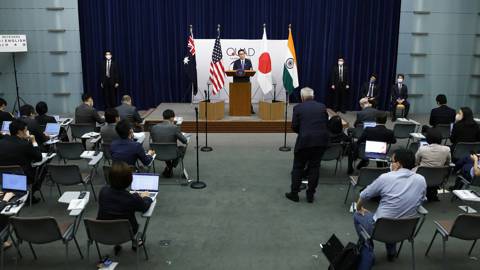
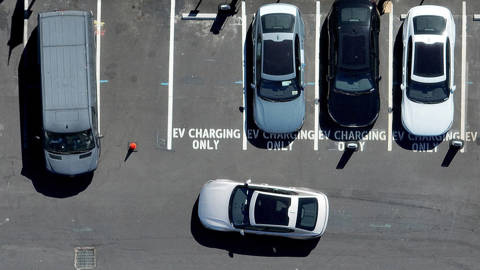
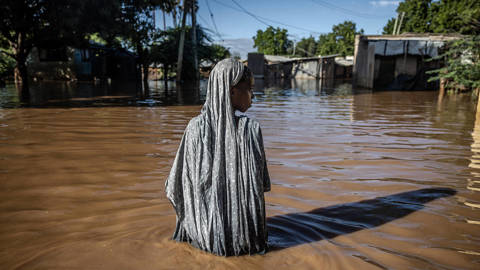
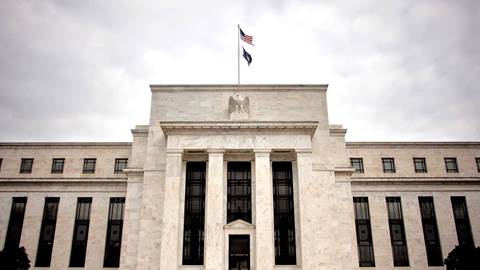

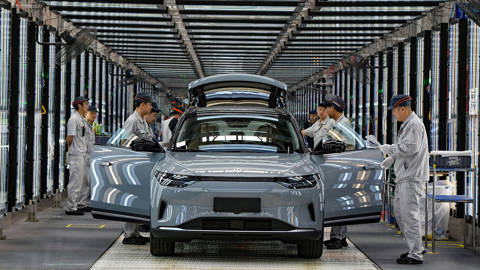
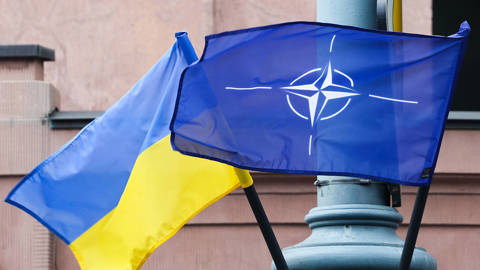


President George W. Bush’s Middle East policy undeniably managed to achieve one thing: it has thoroughly destabilized the region. Otherwise, the results are not at all what the United States had hoped to accomplish. A democratic, pro-Western Middle East is not in the cards.
But, while things are not developing as American neo-conservatives had intended, they are nevertheless developing. The historical failure named Iraq war, the demise of secular Arab nationalism and the soaring oil and gas prices have wrought profound changes in the region. From Damascus to Dubai, from Tel Aviv to Teheran, a new Middle East is now emerging.
The old Middle East arose from the borders and political identities created by the European powers after the fall of the Ottoman Empire in 1918. Its driving ideological force was a European-inspired secular nationalism, which strove for political and social modernization through top-down government action. This type of nationalism, or “Arab socialism,” reached its apex during the Cold War, when it could lean on Soviet military, political, and economic support.
Its end came with that of the Soviet Union, as it petrified into authoritarian, corrupt, and inefficient military regimes and dictatorships. The end of the Soviet Union also triggered a profound military crisis in many Arab states: without Soviet support as an external guarantor of their military capabilities, the nationalist regimes were no longer able to keep pace with military modernization.
The nationalist regimes thus gradually lost domestic popular legitimacy, creating a vacuum that non-state actors have now largely filled. The ideological forces and the currency of power have also changed, with political Islam replacing secularism while skillfully integrating social issues and revolutionary, anti-Western nationalism.
Today, the old Middle East can still be found in Syria, Egypt, Yemen, Tunisia, Algeria, and Fatah-controlled Palestine. The new Middle East includes Dubai, the Gulf emirates, and Israel, as well as Hezbollah, Hamas, and jihadi terrorism – and, partly, Iran and Saudi Arabia. Jordan and Morocco are also trying to associate themselves with the new Middle East.
SPRING SALE: Save 40% on all new Digital or Digital Plus subscriptions
Subscribe now to gain greater access to Project Syndicate – including every commentary and our entire On Point suite of subscriber-exclusive content – starting at just $49.99.
Subscribe Now
Obviously, as these examples suggest, “new” does not necessarily mean better, but simply different and more modern. Indeed, modernization by no means implies a solution to the conflicts that continue to fester in the region. Instead, these conflicts are themselves “modernized,” which could make them even more dangerous than in the past.
An aspect of such modernization could be seen in the 2006 Lebanon war between Israel and Hezbollah, where tank warfare was rendered obsolete by missiles and Katyushas. At the same time, non-state actors, such as Hezbollah, Hamas, and al-Qaeda, have taken the place of traditional armies, and suicide bombers equipped with road-side and car bombs or explosive belts have replaced guerrilla fighters with their Kalashnikovs.
Perhaps the most important change is the shift in the region’s political and military center of gravity. While Israel, Palestine, and Lebanon defined the most important hot spots in the old Middle East, regional power and politics in the wake of the Iraq war is now centered in the Persian Gulf. The dominant conflict is no longer the Israeli-Palestinian struggle, but the threat of a confrontation between Iran and Saudi Arabia for sub-regional supremacy, and between Iran and the US for regional hegemony. Indeed, it is by now virtually impossible to implement any solution to the Israeli-Palestinian conflict without Iran and its local allies – Hezbollah in Lebanon and Hamas in Palestine.
In a way, then, the war in Iraq forms the strategic and military bridge between the old and the new Middle East. The US intervention has brought about four far-reaching changes in the region:
· Iran’s hegemonic ambitions have been unleashed, and the country has been helped to a strategic position that it could never have reached on its own.
· The democratization of Iraq has empowered the Shi’a majority, which in turn greatly strengthened Iran’s influence. Indeed, the war in Iraq has transformed the centuries-old Shi’a-Sunni conflict by infusing it with modern geopolitical significance and extending it to the entire region.
· The rise of Iran poses an existential threat to Saudi Arabia, because the country’s oil-rich northeast is populated by a Shi’a majority. A Shi’a government in Baghdad, dominated by Iran, would, in the medium term, threaten Saudi Arabia’s territorial integrity – a scenario that the Saudis cannot, and will not, accept.
· Should Iran manage to become a nuclear power, the Saudis’ existential fears would dramatically escalate. More generally, the currency of conventional military power in the Middle East would largely lose its value, inevitably resulting in a regional nuclear arms race.
Emanating from this new situation is the threat of disintegration of the whole Anglo-French system of states in the Middle East. The first candidate is, of course, Iraq.
Whether Iraq can be held together despite the ethnic and religious confrontations that pit Kurds against Arabs and Sunnis against the Shi’a is one of the most pregnant questions for the new Middle East. For Iraq’s disintegration would be hard to contain; indeed, it could bring about a thorough balkanization of the region.
Another important question is whether political Islam will move toward democracy and acceptance of modernity or remain trapped in radicalism and invocation of the past? The forefront of this battle is, at the moment, not in the Middle East, but in Turkey; nevertheless, the result is bound to have more general significance.
The emergence of the new Middle East may present an opportunity to establish a regional order that reflects the legitimate interests of all the actors involved, provides secure borders, and replaces hegemonic aspirations with transparency and cooperation. If not, or if such an opportunity is not seized, the new Middle East will be much more dangerous than the old one.